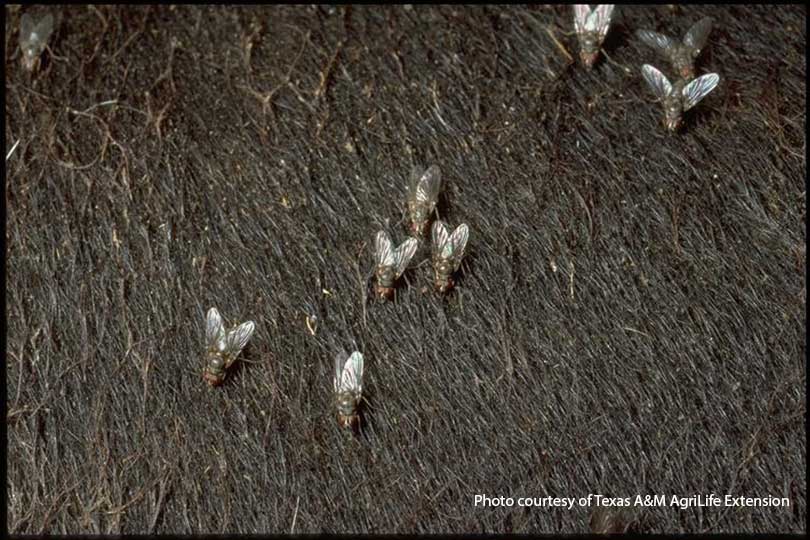By Shala Watson
Multimedia Writer
The mild winter brought early populations of livestock pests into the spring. Moisture and warmer temperatures this summer widened the window of opportunity and created favorable conditions for several pests, including horn flies and stable flies.
“Anytime we have the moisture and the heat together, we see an increase in populations,” Dr. Sonja Swiger, Texas A&M AgriLife Extension veterinary entomologist, said.
Swiger said there were reports from ranchers across the state regarding stable flies.
“Usually it’s just our dairy facilities that are running into major stable fly issues,” Swiger said. “But this year, we do have them running pretty much across the board. If there were animals out there, the stable flies were finding them.”
Swiger noted the horn fly lives exclusively on the animal and takes constant blood meals throughout the day, which can sometimes cause a decrease in weight.
They also can have negative effects on the cow and decrease milk production. Swiger said the flies also bother calves to the point where they won’t feed properly.
“It usually takes several hundred flies before we see that impact,” Swiger said. “That’s just because the animals won’t feed properly when they are too bothered by the flies.”
Cattle also try to avoid horn flies by getting into tanks and ponds, which keeps them from grazing.
The economic impact of horn and stable flies can cost ranchers more than $10 per calf in a 100-day period, according to Jason Banta, Texas A&M AgriLife Extension Service beef cattle specialist at Overton.
Ranchers can, however, use several control methods.
One control option includes feeding products that leave residual active ingredients in cattle manure to prevent larval development.
Another control option is insecticide ear tags that provide three to five months of control.
Other options include pour-ons, sprays and back rubbers.
“All of these products you’ll have to reapply at some point,” Swiger said.
The VetGun is a newer control product that acts very similar to a pour on, according to Swiger.
“The delivery system is through a modified paintball, and you shoot the animal with the cap,” she said. “You get the protection that you need for several weeks.”
She recommends livestock owners figure out the best option that fits their individual ranch and needs.
She said typically when it starts to get cooler during the fall, there’s a reduction in pest populations, but Swiger reminds ranchers not to let their guard down and to stay vigilant.
Research conducted over the years has indicated high populations of horn flies going into September and October.
“Finding relief really takes a while,” Swiger said. “It really is not until winter that we will see some relief.”
Although it is a regional issue, Swiger also reminds cattlemen to be aware of cattle fever ticks.
“It’s important that people keep an eye on that situation and at least maintain some updates and know where the outbreaks are occurring,” Swiger said.

